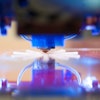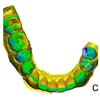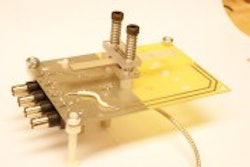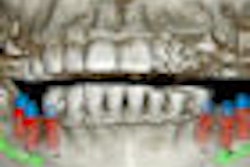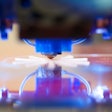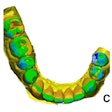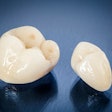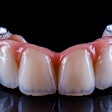Researchers from Cornell University have developed a low-cost microscopic camera that fits on the head of a pin and contains no lenses or moving parts (Optics Letters, July 6, 2011).
The camera was invented in the lab of Alyosha Molnar, a Cornell assistant professor of electrical and computer engineering, and developed by a group led by Patrick Gill, a postdoctoral associate. Their working prototype is 0.01-mm thick and 0.5 mm on each side. The camera resolves images about 20 pixels across -- not portrait studio quality, but enough to shed light on previously hard-to-see items.
"It's not going to be a camera with which people take family portraits, but there are a lot of applications out there that require just a little bit of dim vision," Gill stated in a press release.
Gill began this invention as a side project related to work on developing lensless implantable systems for imaging brain activity. The camera comprises a flat piece of doped silicon that looks something like a tiny CD, with no parts that require off-chip manufacturing. As a result, it costs just a few cents to make and is incredibly small and light, as opposed to conventional small cameras on chips that cost a dollar or more and require bulky focusing optics.
The scientists call their camera a Planar Fourier Capture Array (PFCA) because it uses the principles of the Fourier transform, a mathematical tool that allows multiple ways of capturing the same information. Each pixel in the PFCA reports one component of the Fourier transform of the image being detected by being sensitive to a unique blend of incident angles. While Fourier components themselves are sometimes directly useful, a bit of computation can also transform Fourier components into an image.
The scientists say they will continue working to improve the camera's resolution and efficiency, but they think their concept can lead to a myriad of applications.


